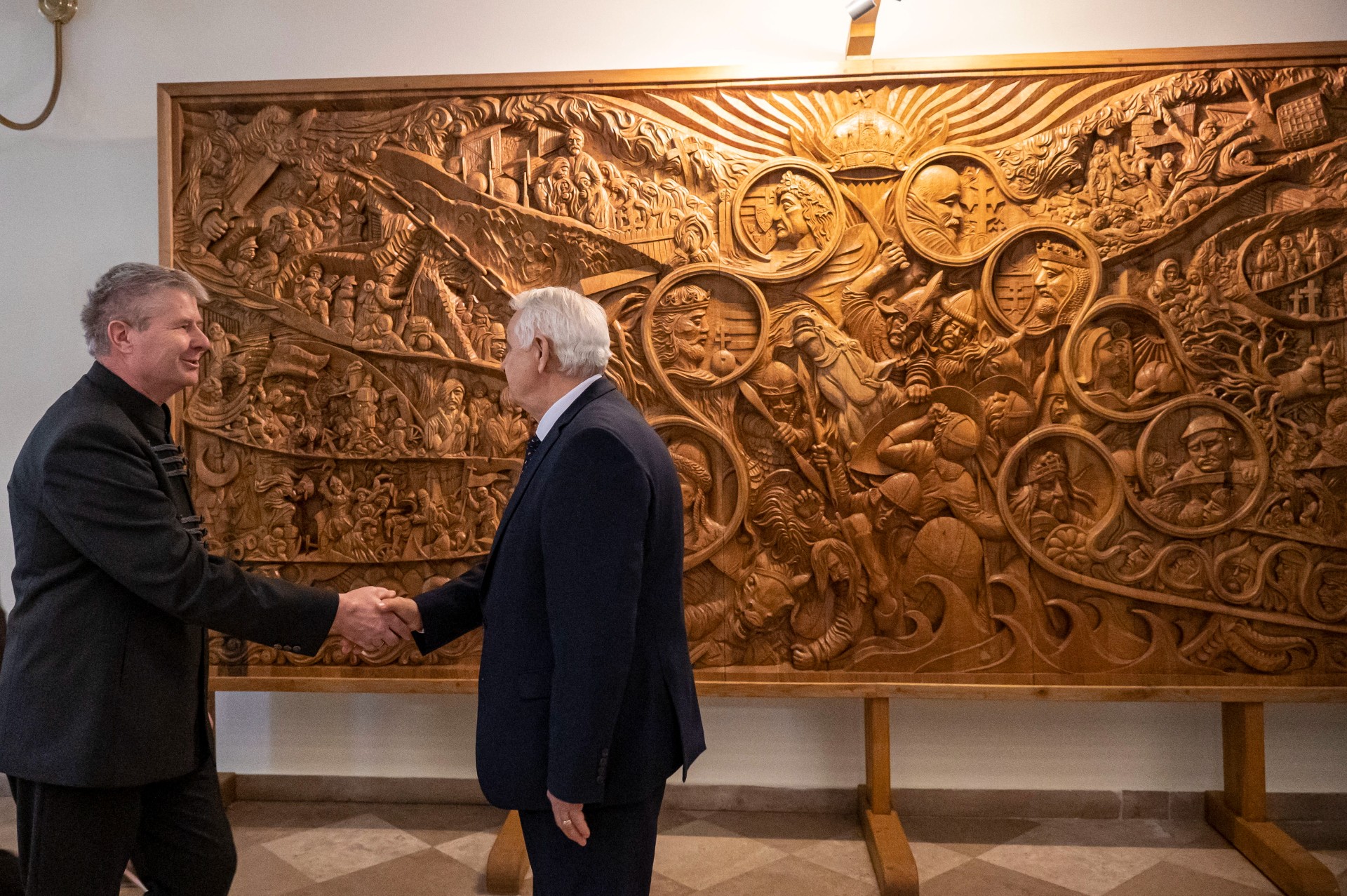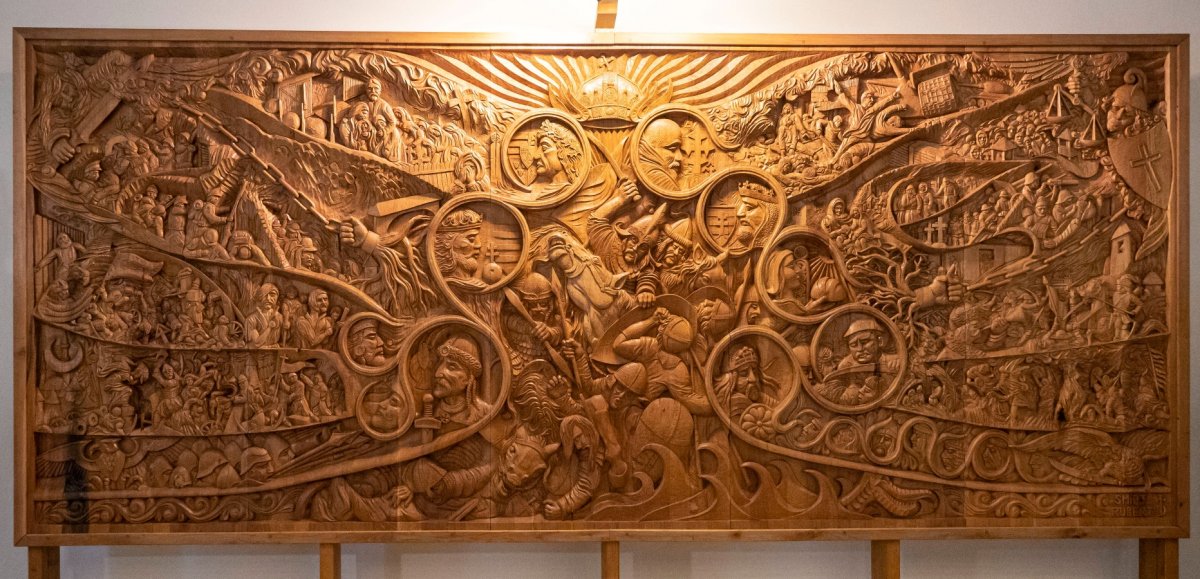The woodcarving artist Róbert Smidt's relief called National Anthem was inaugurated in the István Barankovics Office Building on 20 January on the Day of Hungarian Culture. The five-metre-long and two-metre-high, approximately eight-quintals-weight tableau, carved from oak wood depicts the fateful events of Hungarian history from the period before the conquest to the revolution of 1956, reports MTI.
At the ceremony on Friday in the building at 19 Széchenyi Embankment, known as the Offices of the Members of the National Assembly, János Latorcai, Deputy Speaker of the Parliament, reminded us that the National Anthem was born in an era in which Hungarians had to choose between imperial assimilation and the strengthening of national existence. "In this respect, the relief reminds us at a similar age of how many times and how much sacrifices our ancestors made for our national survival," the Deputy Speaker pointed out, then added: the work can remind those passing by every day that those who are on the good side of history have always been those who fought for Hungary's national independence in the stormy centuries of the past.

János Latorcai, Deputy Speaker of the National Assembly (right) and woodcarving artist Róbert Smidt, creator of the relief work entitled National Anthem, shake hands at the inauguration of the plaque in the hall of the István Barankovics Office Building on 20 January 2023 (Photo: MTI/Zsolt Szigetváry)
"Neither Franz Joseph nor Mátyás Rákosi, nor the leaders of the successor states of Trianon could accept that the National Anthem has become one of the main expressions of our national unity. That is why it is crucial that the Fundamental Law of Hungary begins with the first line of the National Anthem," added János Latorcai.
He emphasised: trees, by their very nature, remind us of the years left behind us, since the annual rings starting from the centre of the trunk indicate which years were favourable and which brought trials and suffering. The Deputy Speaker of the National Assembly pointed out that the relief, starting from the centre and following a spiral structure similar to the annual rings, initiates the stream of memories encompassing Hungary's history, which faithfully reflects the stormy centuries of the Hungarian people.
The pictures of life and dramatic scenes on the tableau, elaborated with incredible detail, show the struggles of Hungarians for survival, including the Battle of Pressburg in 907, the Tartar invasion, the period of the Turkish invasion, Rákóczi's War of Independence, the Treaty of Trianon that mutilated the country, and the 1956 revolution - said János Latorcai.
"The fact that we survived is almost unthinkable without divine help. This is indicated by the pair of archangels and the Holy Crown appearing in the upper part of the relief," emphasised the Deputy Speaker of the National Assembly.
The work of Csaba Smidt, who lives in Szőgyén in the Highlands, was created in the artist's workshop for six years starting in 2010. The first presentation of the National Anthem tableau was in Tata in 2017. After that, it was presented in several cities of Hungary and the Highlands, until it ended up in István Barankovics Office Building.
Source: MTI
Cover photo: The National Anthem relief was inaugurated in the hall of István Barankovics Office Building (Photo: MTI/Zsolt Szigetváry)








Hozzászólások
Log in or register to comment!
Login Registration